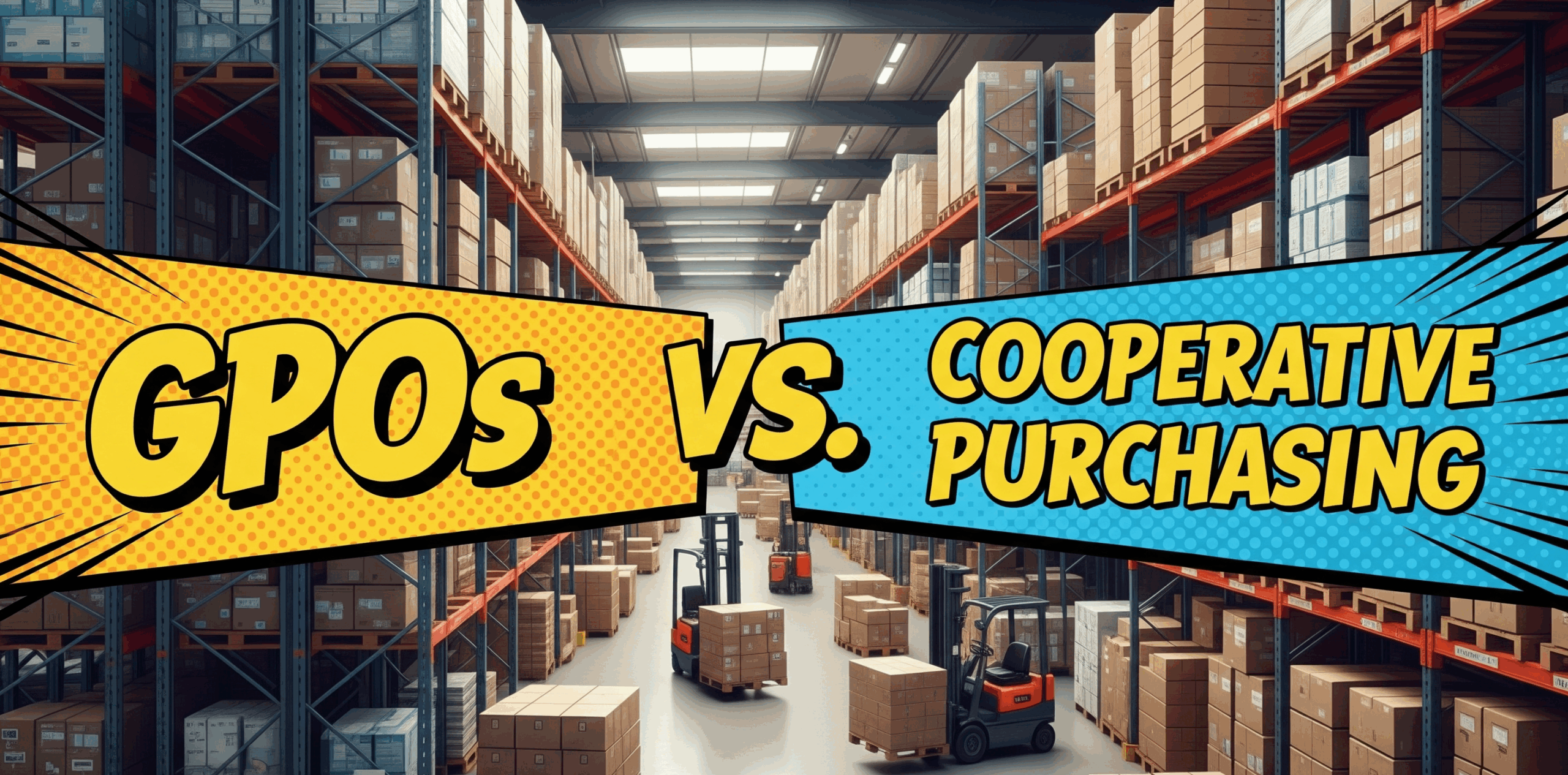In today’s complex supply chain landscape, organizations are under increasing pressure to drive cost savings, improve efficiency, and maintain control over their Maintenance, Repair, and Operations (MRO) procurement. Group Purchasing Organizations (GPOs) have traditionally offered one path to aggregated buying power, but many companies find their rigid structures and one-size-fits-all models limiting. That’s where cooperative purchasing steps in as a more agile, member-centric alternative.
This blog post explores the key differences between cooperative purchasing and GPOs in MRO spend management—and why SDI’s tailored cooperative purchasing approach helps members achieve superior results.
Understanding the Difference: Cooperative Purchasing vs. GPOs
At first glance, cooperative purchasing and GPOs both aim to leverage collective buying power to secure better pricing and terms from suppliers. But the similarities stop there
| Feature | Group Purchasing Organizations (GPOs) | Cooperative Purchasing (SDI Model) |
|---|---|---|
| Structure | For-profit, driven by margins and vendor rebates | Member-owned, focused on member value |
| Flexibility | Rigid supplier contracts and categories | Flexible access to categories based on need |
| Profit Sharing | Profits stay with the GPO | Shared back with members as dividends |
| Member Support | Limited engagement beyond contracts | Dedicated Member Ambassadors for personal support |
GPOs often dictate supplier contracts and categories, leaving members with little room to tailor agreements to their unique MRO procurement needs. Cooperative purchasing, on the other hand, empowers members with greater agility and control.
Why SDI’s Cooperative Purchasing Model Wins
1. Profit Sharing that Rewards Members
Unlike traditional GPOs where profits flow back to the organization, SDI’s cooperative model ensures members share in the financial benefits. Dividends are distributed to members based on participation, creating a true partnership and aligning interests.
2. Flexible Category Access
MRO procurement is notoriously complex, spanning thousands of SKUs and specialized categories. SDI’s cooperative purchasing allows members to select categories and suppliers that best fit their operations, rather than being locked into predefined agreements.
3. Personalized Support with Member Ambassadors
Every cooperative member receives a dedicated Member Ambassador. These supply chain professionals act as an extension of your team, understanding your specific goals, monitoring performance, and helping optimize MRO strategies. This level of support is rare in traditional GPOs.
4. Data-Driven Insights for Continuous Improvement
Through Zeus, SDI’s proprietary digital supply chain platform, members gain access to robust analytics, visibility, and actionable insights. This helps uncover opportunities for savings and efficiency beyond price aggregation.
The SDI Advantage: Member Control + Collective Power
By combining the collective power of cooperative purchasing with a focus on member control and customization, SDI helps industrial and manufacturing organizations transform their MRO supply chains. The result?
- Lower total cost of ownership
- Improved operational efficiency
- Greater agility to adapt to market changes
- Stronger supplier relationships
While GPOs offer transactional benefits, SDI’s cooperative approach delivers strategic value and long-term impact.
Ready to Take Control of Your MRO Procurement?
Discover how SDI’s cooperative purchasing model can help you achieve more savings, more flexibility, and more control over your MRO spend.



